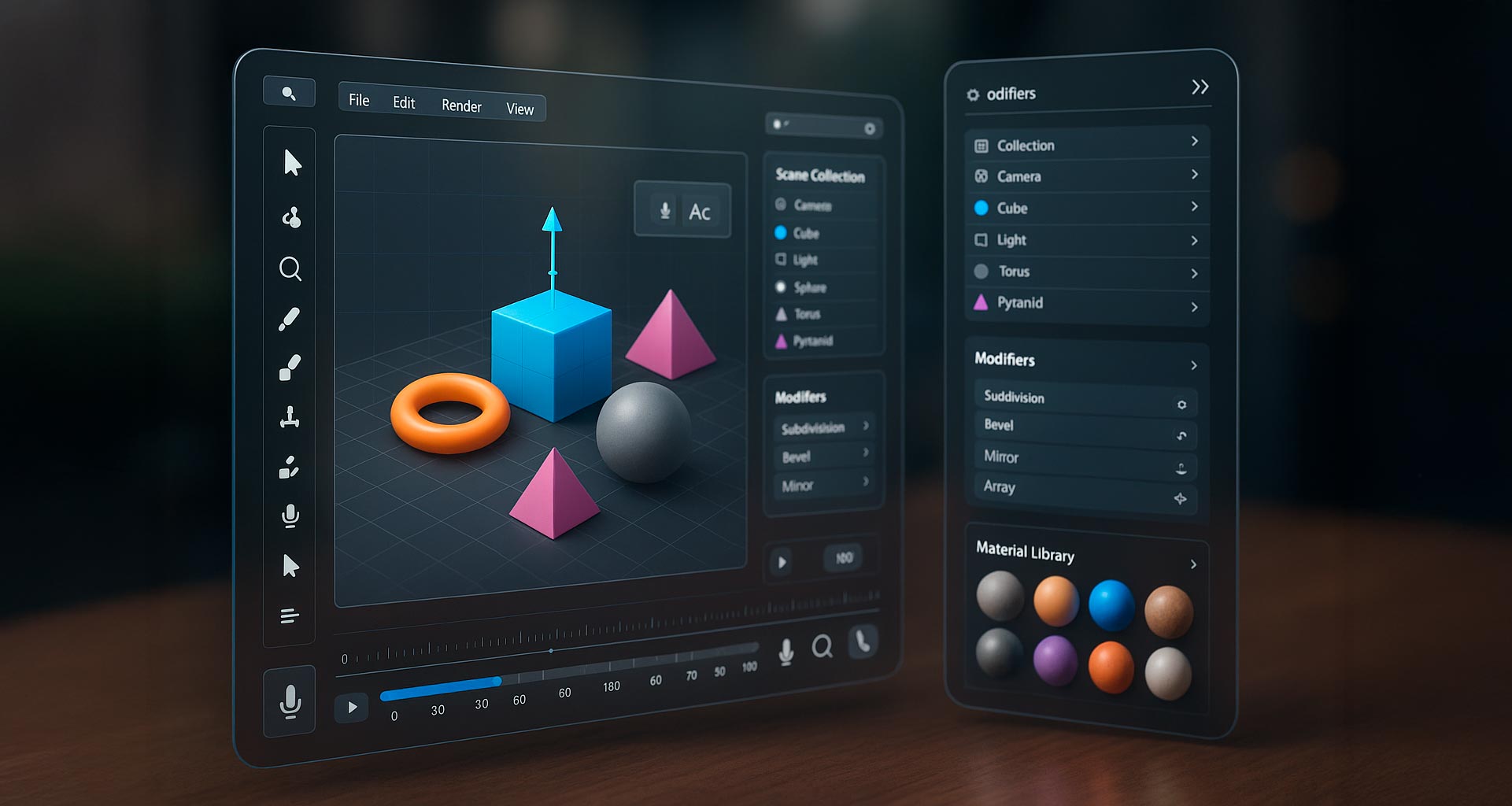3D graphics are experiencing a major technological boom, impacting industries such as video games, the film industry, architecture, industrial design, and virtual and augmented reality. Significant changes are expected in 2025 that will revolutionize the traditional methods of creating and using 3D content. Artificial intelligence, cloud technologies, metaverses, and generative design are rapidly evolving, creating new opportunities for developers and users alike. This article will examine the key trends in 3D graphics for 2025, based on modern technologies and their development prospects.
1. Artificial Intelligence in 3D Modeling
Artificial intelligence (AI) plays a crucial role in the evolution of 3D graphics, simplifying modeling, texturing, and rendering processes. By 2025, its capabilities will reach new heights, making 3D design more accessible, faster, and more precise. Already, AI algorithms like NVIDIA Instant NeRF can generate volumetric scenes from a single image, while OpenAI is developing tools that can transform sketches into detailed 3D models. In the future, AI will fully automate geometry creation, optimizing models for specific tasks, whether for video games, architectural visualization, or the film industry.
Automated texturing and material creation will also become more advanced. Today, Adobe Substance AI and similar programs can analyze photographs and convert them into seamless, realistic textures. By 2025, AI tools are expected to emerge that will adapt materials to specific lighting conditions and physical scene characteristics. This will significantly simplify the process of working with textures on complex models.
AI-driven animation will play a crucial role in creating realistic character movements. Machine learning algorithms like DeepMotion and AI Motion Capture enable the generation of complex movements without the need for real actor recordings. This is especially important for games and virtual worlds, where hundreds of unique animations are required. By 2025, characters will be able to adapt their movements to their environment, making scenes more lively and realistic.
Additionally, rendering technologies will continue to evolve, focusing on AI utilization to enhance image quality. NVIDIA DLSS already enables scene resolution upscaling with minimal computational cost, and new neural network algorithms will be able to automatically analyze lighting and optimize rendering settings in real-time. This will accelerate the process of creating visually rich scenes, improving detail and depth.
2. Realistic Digital Avatars
Digital avatars are becoming an integral part of virtual worlds, social networks, and metaverses. Advances in 3D scanning and machine learning have led to the emergence of hyper-realistic character models that can be used in VR, games, and even business. Platforms like MetaHuman Creator by Epic Games allow the creation of highly detailed 3D humans in just minutes. However, in 2025, an even higher level of detail and personalization is expected.
One of the main challenges of modern digital avatars is the realistic transmission of emotions and movements. Facial motion capture technologies are becoming more accessible, and in the future, neural networks will be able to analyze voice and facial expressions in real-time, transferring them to digital models without delays. This will open new possibilities for virtual bloggers, interactive assistants, and digital actors.
Digital influencers created entirely from scratch are gaining popularity in the advertising industry. Such characters are already used in marketing campaigns, and in the future, they will be able to host live streams and interact with followers thanks to advanced AI algorithms. Companies will be able to create fully managed virtual brand ambassadors, reshaping traditional advertising strategies.
Beyond marketing, digital avatars will be widely used in corporate environments. Many companies are already testing virtual employees for customer service and support. AI-powered virtual characters will be able to conduct negotiations, assist users in online stores, and even participate in business presentations, replacing traditional forms of communication.
3. Cloud Rendering and Generative Design
Cloud technologies are transforming the way 3D graphics are handled. By 2025, they will allow even small studios and freelancers to use powerful server farms for rendering complex scenes without the need to purchase expensive hardware. Services such as Google Cloud Render, AWS ThinkBox, and NVIDIA CloudXR provide subscription-based GPU access, enabling work with heavy 3D scenes directly in the browser. This is particularly useful for creating animations, special effects, and architectural visualizations.
Generative design, based on artificial intelligence algorithms, will also become more in demand. Autodesk Dreamcatcher and similar technologies allow for the automatic development of structures optimized for strength, weight, and materials. In the future, this method will be actively used in architecture, industrial design, and mechanical engineering. For example, AI will be able to analyze environmental parameters and propose optimal building shapes in terms of energy efficiency and ventilation.
Generative design will also find applications in creative fields such as fashion and interior design. Artists will be able to use AI to quickly create complex textile patterns, furniture, or decorative elements. This will simplify the design process and allow experimentation with new forms and materials.
Another significant technology will be automated lighting and photorealistic rendering. Global illumination systems like Lumen from Unreal Engine already allow for the modeling of complex lighting scenes in real time. By 2025, similar solutions will be widely applied in games, VR/AR applications, and cinematography, providing high-quality lighting without significant resource expenditure.
Conclusion
The year 2025 will mark a significant milestone in the development of 3D graphics. Artificial intelligence, cloud technologies, metaverses, and generative design will continue to transform the industry, making 3D content creation faster, cheaper, and more accessible. The development of realistic digital avatars will change the ways people communicate in virtual environments, while neural network-based rendering methods will achieve cinematic quality in real time.
For 3D artists, game development studios, and engineers, this means new opportunities and tools that will help create unique projects with fewer costs. Stay updated on new technologies to remain at the forefront of the 3D graphics industry and maximize their potential.

